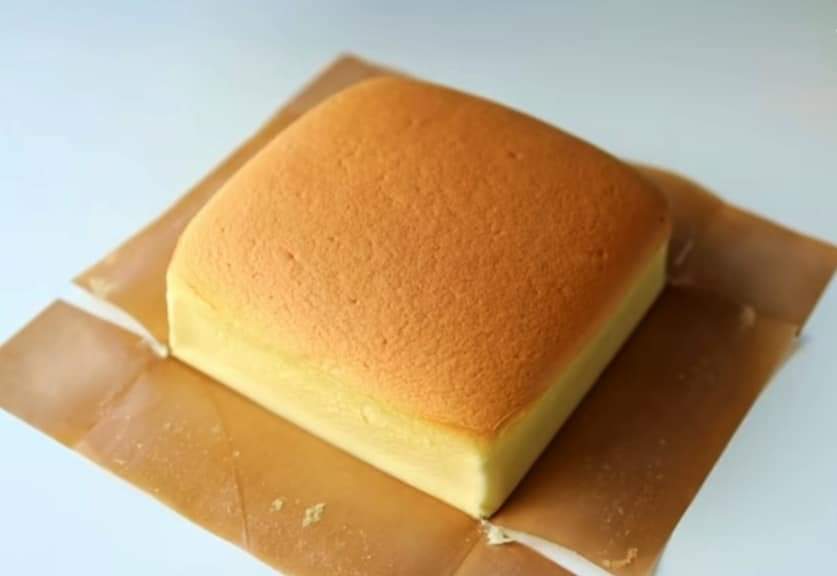Taiwanese Castella Cake
Taiwanese castella cake is a type of sponge cake that is known for its iconic jiggly, bouncy nature, smooth golden brown crust, incredible moisture, and light delicate sweetness. Beyond its pillowy soft appearance and irresistible aroma, this Taiwanese cake transports you to a world of intricate flavors and gentle textures.
Baking is my favorite form of therapy. Baking a super soft, tender castella cake from scratch provides the most satisfying feeling of accomplishment. If you are looking for more soft and fluffy cake inspiration, check out our Japanese cotton cheesecake, Japanese cake roll, or mango cake.
Ingredients
- 130 g (1 cup) cake flour
- ¼ teaspoon salt
- 130 g (9 tablespoons) unsalted butter
- 130 g (1/2 cup + 2 teaspoons) whole milk
- 8 large eggs yolks and whites separated room temperature
- ½ teaspoon cream of tartar
- ½ tablespoon vanilla extract
- 130 g (2/3 cup) granulated sugar
Instructions
Castella Cake Batter
1.Prepare the pan and oven. Preheat the oven to 300°F (150°C) and line all the edges of an 8x8x3 inch pan with parchment paper with the parchment paper 1 inch higher than the pan. If your pan is not completely sealed along the corners, wrap the outside of the pan with aluminum foil. Heat hot water to about 175°F or (79°C) for the water bath.
2.Sift the cake flour and salt. In a large mixing bowl, sift the cake flour and salt to remove any clumps.
3.Warm butter and milk. In a small saucepan, add the butter and milk over medium heat. Heat until the butter is just melted and steamy about 120°F (49°C). Do not bring to a simmer or boil.
4.Combine. Combine the warmed butter and milk with the sifted cake flour. Whisk until combined.
5.Add egg yolks one at a time and vanilla. Add the egg yolks one at a time, whisking to incorporate each yolk before adding the next one. Whisk until thoroughly combined. Then add the vanilla extract and mix to combine.
6.Make the meringue. In a large mixing bowl or in the bowl of your stand mixer with the whisk attachment, wipe the bowl and the whisk with a thin layer of white vinegar. Then beat the egg whites and cream of tartar on low speed until foamy. While the mixer is beating, slowly pour 1/3 of the sugar and mix to incorporate at medium speed. Repeat with the remaining 2 batches of sugar until the meringue has reached soft peaks. You will know the meringue is done when you lift the whisk and the meringue tips flop over and do not hold a stiff peak.
7.Combine. Combine 1/3 of the meringue into the egg yolk mixture and fold by using a spatula and lifting the two mixtures and turning them over until combined. Repeat two more times with the remaining meringue. Continue folding until uniform in color.
Bake and Serve
1.Pour the batter. Pour the batter into the prepared cake pan from about 12 inches from the pan. Then tap the pan on the counter to remove any bubbles. Use a toothpick to remove any remaining bubbles.
2.Place in a water bath. Place the cake pan in a larger baking pan and then pour in the hot water (175°F or 79°C) to about 1 inch to 1.5 inch up the side of the square pan.
3.Bake. On the lower 1/3 rack in the oven, bake the castella cake for about 65-70 minutes, or until the cake is golden brown at the top and a toothpick inserted in the center comes out clean.
4.Serve. Let the Taiwanese castella cake sit for 2 minutes before removing it from the pan, peeling the parchment paper, and slicing. The cake will slightly deflate as it cools.
Notes
Measure the ingredients with a kitchen scale: the majority of ingredients are on a 1:1 ratio that is most precisely measured using a kitchen scale.
Line the cake pan with parchment paper. Make sure to line all the edges of the cake pan with parchment paper. Leave about 1 inch of parchment paper above the cake pan for easy removal.
If not a solid cake pan, line with aluminum foil. If your cake pan has edges that are not completely sealed like along the corners, then line the outside of your pan with aluminum foil to prevent any leakage.
Heat the milk and butter to just melted. Heat the milk and butter breaks down the proteins in the flour which creates a soft sponge. Make sure to not overcook the milk and butter and warm until it reaches 120°F or 49°C. Too hot and the dough will be too sticky.
Fold the batter gently. After creating the perfect meringue, gently fold in the egg yolk batter by using a rubber spatula, scraping the edge then bottom of the bowl and then lifting up to fold the batter over onto itself. Make sure to fold until just combined. Over folding can lead to a dense and flat cake.
Make sure the water bath is hot but not boiling. We do not want the water to evaporate too quickly during the bake so make sure the water is at around 175°F or (79°C).
Tips For Foolproof Meringue
Wipe your bowl and mixer with vinegar. Wiping your meringue bowl and mixer with vinegar will remove any fat residue that could prevent the egg whites from whipping fully. Use a paper towel and dip it in white vinegar.
Do not use plastic bowls for meringue. For the meringue, do not use any plastic bowls since they have a porous surface and definitely hold residual oils.
Use room temperature eggs and cream of tartar. Room temperature egg whites and cream of tartar create a firmer and more stable meringue. This is important since the eggs are the main leavening ingredient that hold the key to its rise.
Whip egg whites at medium speed. Whip the eggs at medium speed so the egg whites have time for the sugar to dissolve. The slower speed also, prevents any large air bubbles from forming and cracking the surface.
Whip egg whites to soft peaks. Soft peaks is when the egg whites are white and glossy and when you lift the whisk a small peak forms and then flops over. Don’t whip to stiff peaks, this will lead to cracks on the top.
Storage
This castella cake is best enjoyed the day it is baked. You can store any leftovers in an airtight container in the refrigerator for up to three days. Bring the cake to room temperature before serving.
Alternatively, you can wrap the Taiwanese castella cake in plastic wrap and store them in a freezer proof container in the freezer for up to 3 months. Defrost in the refrigerator overnight before serving.





Comments
Post a Comment